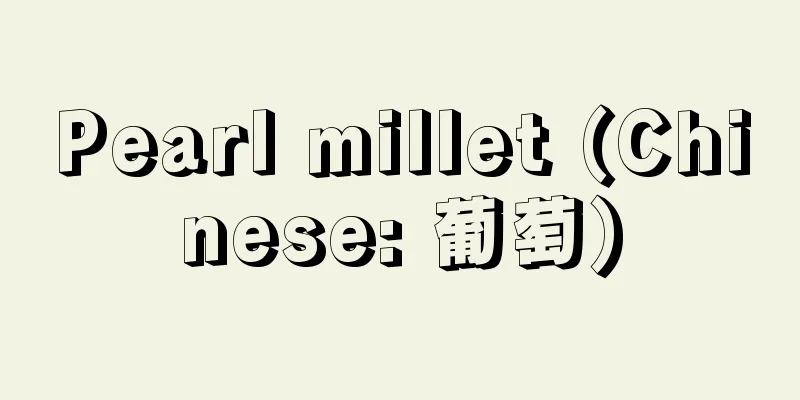Hiromichi Hagiwara

|
Year of death: December 3, 1863 (January 11, 1864) Year of birth: Bunka 12.2.19 (1815.3.29) A Japanese classicist of the late Edo period. His first surname was Fujiwara. His childhood name was Shuzo, later Koheita and Hamao. He was commonly known as Shikazo and Kazaemon. He was known by the names Yoshinuma, Nirazono, Hiruen, Rokumeisosha and Izushikyo. He was born in Amigahama, Kamimichi County, Bizen (Okayama City). His father, Fujiwara Eizaburo Taitoku, was a samurai of the Okayama domain. He was intelligent from an early age, but he was not blessed with a good family life, with his mother and other family members dying one after the other and his father being in poor health. After his father's death, his family status was demoted and he was not treated well as a samurai of the domain, so in 1845 he left the domain and went to Osaka. He was forced to live an unstable life in Osaka, became addicted to heavy drinking to escape poverty, and in his later years he suffered a stroke and lived a desolate life. Hiromichi received instruction in waka poetry from Hiraga Motoyoshi as early as his teens, and in his twenties he compiled "Hyakushu Iken Tsuseihyo" (One Hundred Poems, Different Views, and a Criticism of Kagawa Kageki), demonstrating his precocious talent. While earning a living by writing drafts of various books in Osaka, he came into contact with many scholars of Japanese classics and poets, and eventually established his own school of Japanese classics. He was particularly involved in the planning and publishing of books on Japanese classics and waka poetry, and possessed the skills of an editor. His literary talent was also directed towards writing the humorous novel "Ashi no hawake" and reading books. The publication of "Commentary on the Tale of Genji," although only a partial commentary, is sufficient to represent Hiromichi's entire achievements. <References> Morikawa Akira, "Hagiwara Hiromichi's Autobiography" (Konton, no. 8), Yamazaki Katsuaki, "Hagiwara Hiromichi's Brief Chronology" (Kokubunronso, no. 17), and Yamazaki Katsuaki, "Hagiwara Hiromichi's Waka" (Kokubunronso, no. 18) (Keichi Kubota) Source: Asahi Japanese Historical Biography: Asahi Shimbun Publications Inc. About Asahi Japanese Historical Biography |
|
没年:文久3.12.3(1864.1.11) 生年:文化12.2.19(1815.3.29) 江戸後期の国学者。初姓藤原。幼名就蔵,のち小平太,浜雄。通称鹿蔵,鹿左衛門。葭沼,韮園,蒜園,鹿鳴草舎,出石居などと号した。備前上道郡網ケ浜(岡山市)に生まれる。父藤原栄三郎台得は岡山藩士。幼時より利発だったが,実母をはじめ家族が次々没し,父の病弱もあって家庭的には恵まれなかった。父の死後家格を下げられ,藩士としても待遇は悪く,弘化2(1845)年には藩を退き大坂に出る。以後は大坂の地で不安定な生活を余儀なくされ,貧困からの逃避のため大酒におぼれ,晩年は中風にかかるなど,荒廃した日々を送った。広道は10歳代に早くも平賀元義に和歌の指導を受け,20歳代で『百首異見摘評』をまとめて香川景樹批判の立論を行うなど,早熟の才を発揮した。大坂では諸書の板下書きで収入を得ながら多くの国学者,歌人と交流を持ち,独自の国学を樹立するに至る。特に国学書,歌学書の企画,出版に関与すること多く,編集者としての能力を備えてもいた。文才は戯文『あしの葉わけ』や読本の執筆にも向けられた。『源氏物語評釈』の刊行は,部分注釈とはいえ広道の全業績を代表するに足る。<参考文献>森川彰「萩原広道の自叙伝」(『混沌』8号),山崎勝昭「萩原広道略年譜攷」(『国文論叢』17号),同「萩原広道の和歌」(『国文論叢』18号) (久保田啓一) 出典 朝日日本歴史人物事典:(株)朝日新聞出版朝日日本歴史人物事典について 情報 |
Recommend
Water plantain - Water plantain
A submerged annual aquatic plant of the family Hy...
Tabata Narushi・Hatatana Narushi - Tabata Narushi
In the Edo period, the distinction between rice pa...
General Metaphysics
…The Japanese translation of the term metaphysics...
Miller, WH
…On the other hand, the concept of crystal lattic...
Military law
A legal system for military personnel, civilian em...
VISA
This magazine is distributed to Sumitomo Mitsui VI...
Velvet moth - Velvet moth
An insect of the family Tortricidae in the order L...
Geoffrin
…The salons of Madame de Anville and Madame de Ai...
Carotene
A general term for carotenoid hydrocarbons such a...
Rhythm and blues
A type of African-American popular music that was ...
Ephemeris belli Troiani (The Trojan War)
A forgery attributed to Diktys of Crete. It has co...
Southwark
It is one of the 33 districts that make up Greater...
Minamoto no Kanemasa
?-? A government official and poet in the late He...
John George Diefenbaker
Canadian politician. Member of the Progressive Co...
Aka Island
It is an island in the Kerama Islands, about 40km ...









